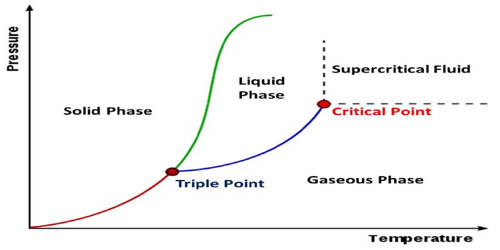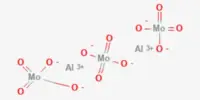A supercritical fluid is a substance with both gas-and liquid-like properties. When a compound is subjected to a pressure and a temperature higher than its critical point, the fluid is said to be “supercritical”. A supercritical fluid (SCF) is any substance at a temperature and pressure above its critical point, where distinct liquid and gas phases do not exist. They have properties between those of a gas and a liquid. They are fluids which are compressed below their critical temperatures, yet kept in the liquid state and used above their boiling points with the use of pressure. Supercritical behavior only occurs when the substance is above its critical temperature and pressure.
It can effuse through solids like a gas, and dissolve materials like a liquid. They are completely miscible with each other, so for a mixture, a single-phase can be guaranteed if the critical point of the mixture is exceeded. In addition, close to the critical point, small changes in pressure or temperature result in large changes in density, allowing many properties of a supercritical fluid to be “fine-tuned”. The fluid will also be called supercritical even if its temperature is below critical point value. In that case, it will be a highly compressed liquid. But pressure is mandatory to be above the critical value. When a gas such a carbon dioxide is contained under high pressure and heated, there are changes to its physical properties. It becomes a supercritical fluid (SCF). Due to its interesting properties, Supercritical CO2 can be described as a “green” solvent. Under these conditions, the gas possesses the solvating power of a liquid and the diffusivity of a gas. Subcritical extractions at low temperatures and low pressure take more time but they can be used to retain the essential oils terpenes and other sensitive chemicals within the plant.
Supercritical fluids occur in the atmospheres of the gas giants Jupiter and Saturn, and probably in those of the ice giants Uranus and Neptune. The fluid is said “supercritical” when it is heated above its critical temperature and compressed above its critical pressure. In a range of industrial and laboratory processes, they are used as a substitute for organic solvents. Carbon dioxide and water are the most commonly used supercritical fluids, being used for decaffeination and power generation, respectively.
Depending on the fluid and equipment used, supercritical fluid processes can:
- Raise technological barriers,
- Optimize your manufacturing processes,
- Provide a sustainable alternative to conventional production methods.
















